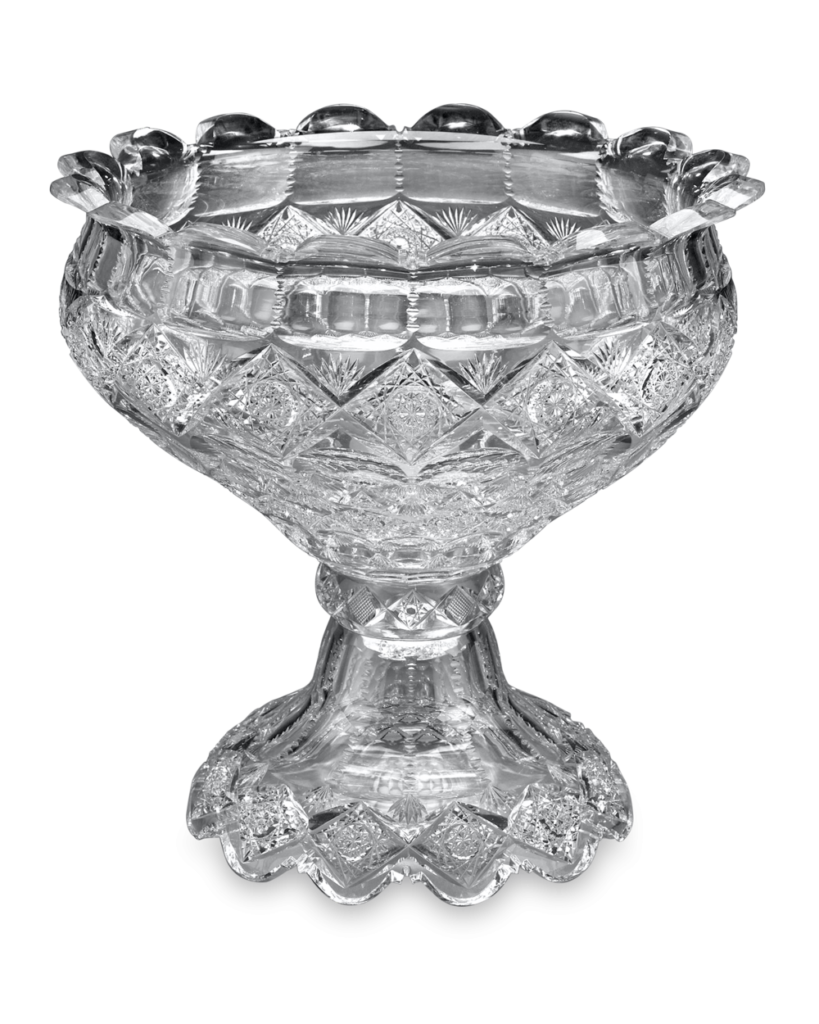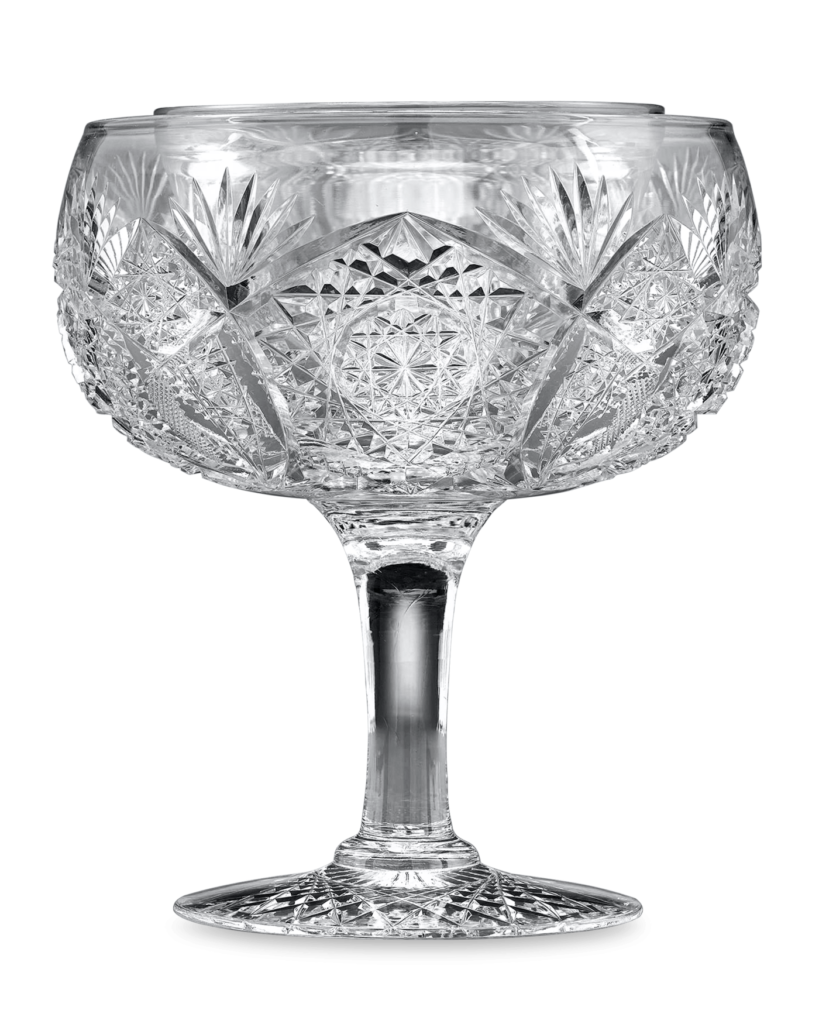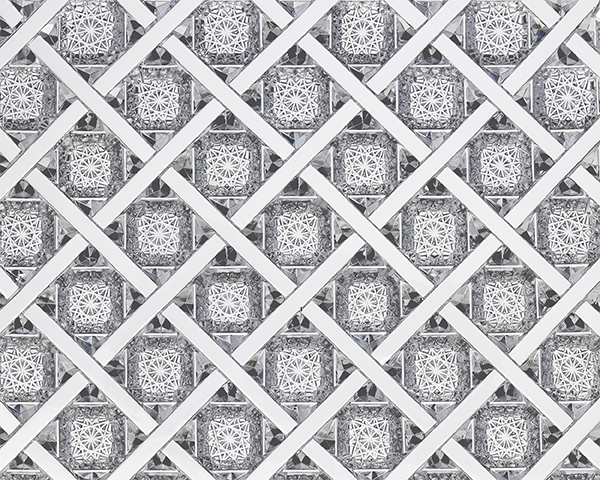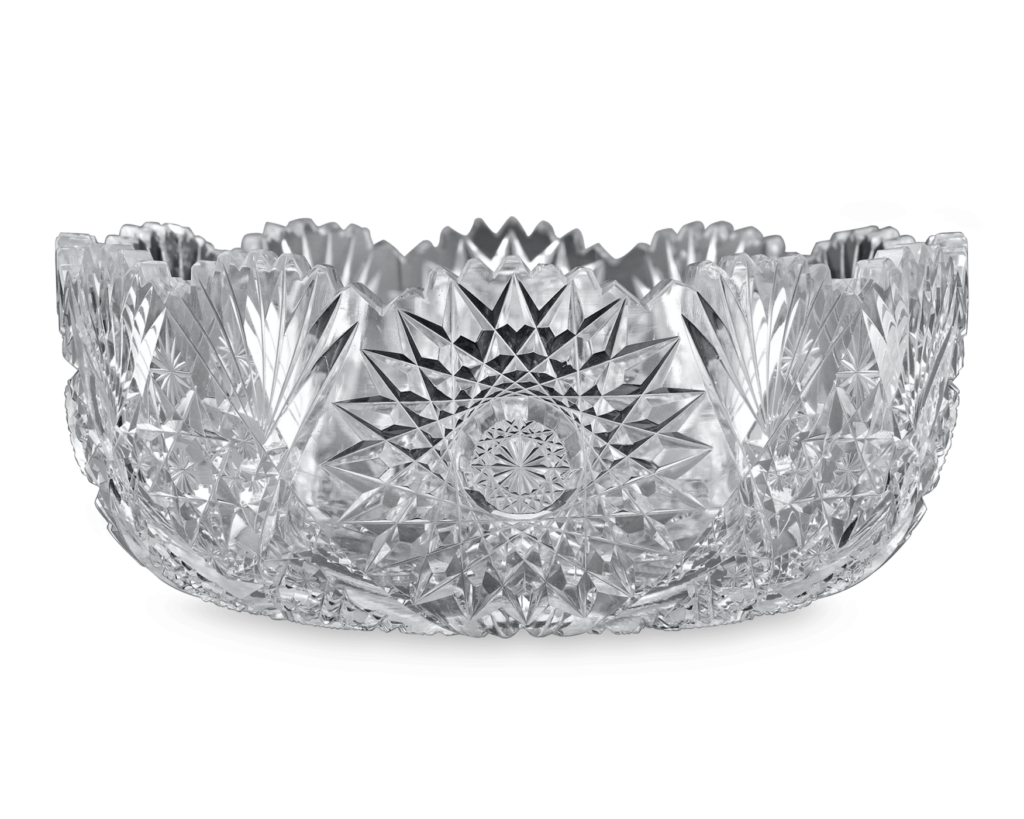
While glass cutting originated in Germany, it didn't take long for the art form to reach the United States. The 1876 Centennial Exposition in Philadelphia marked the beginning of a new era in American decorative arts history. Our country had proven it was strong enough to face the challenges of a fledgling nation and after 100 years, was just beginning to form its own identity. A major attraction at the Exposition was an exhibit that featured the best of what had come to be known as American rich-cut glass. Never before had the public seen such extraordinary wares created by American craftsmen. From this moment, the bar had been raised, as artisans around the globe realized that the United States had proven, once again, that it had what it took to forever change the world’s perception of its fortitude, this time in the arena of the decorative arts.
Prior to this, the most revered cut glassmakers were in Europe, including masters of colored glass and later pioneers of art glass like Rene Lalique, where artisans built upon a tradition that was already over 3,000 years old. In the 18th century, many people saw an opportunity for a new life and, with any luck, a chance to make their own fortunes by emigrating to the United States and bringing their trade with them. In 1771, German-born Henry William Stiegel founded one of America's first and finest cut glass factories, the American Flint Glass Manufactory in Manheim, Pennsylvania and began producing the first examples of American brilliant cut glass.
These early works varied little from pieces created abroad since many of the craftsmen employed the same crystal pattern techniques from their homeland. However, several changes were on the horizon that would impact the industry. The use of natural gas instead of coal-fired furnaces allowed for a cleaner, more controlled heating of the raw, molten glass and the invention of electricity made it possible to create new equipment that replaced cumbersome, steam-driven cutting and polishing instruments. The addition of high-quality silica and lead to the glass formula (also known as lead crystal) made for a stronger, heavier and more brilliant medium that could withstand the most intricate glass cutting techniques and reflect an immense amount of light…hence giving this elegant glass piece the brilliance that made it so prized.
The very nature of clear glass allows for a limitless amount of artistic license. It can be custom cut glass, engraved, molded, blown and enameled. Coupled with the recent innovations to the crystal pattern process, artisans began to create the most delicate and awe-inspiring intricate patterns on a variety of wares, officially ushering in the Brilliant Period of American cut glass production. Intricate geometric patterns that reflected a rainbow of colors were applied to everything imaginable, from small crystal goblets and dishes to grand punch bowls and decanters for the dining room. epergnes. This antique crystal glassware served as both functional and decorative glass art. The industry had grown to such an extent that by 1890, over 1,000 glass companies were in the business of creating these treasured works of art including Libbey Glass, J. Hoare & Co., Dorflinger & Sons, and T.G. Hawkes Company.
Since every piece of brilliant cut glass was formed by hand, the process had always been very expensive, making cut glass accessible only to the most affluent. Cut glass soon became a symbol of elegance and wealth and spawned intense creativity and competition in the industry to create the best.
Elaborate American Brilliant cut glass patterns that rivaled any created by European counterparts emerged. The T.G. Hawkes Company of Corning, New York won several grand prizes at the 1889 Paris Exposition for its Grecian and Chrysanthemum patterns. Only four years later at the 1893 World’s Columbian Exposition in Chicago, the Libbey Glass Company of Toledo won top honors for its treasured Columbia and Isabella patterns.
International acclaim caused a surge in demand for American cut glass patterns and wares. Before long, important commissions were coming from the most prominent figures of the time. Among the most notable were a complete table service for the White House and presentation pieces for the presidents of Mexico and Cuba and King Edward VII of England. American cut glass companies were now producing items that were superior to any in the world, items that embodied a standard of quality and craftsmanship that, even today, have yet to be rivaled.
By 1897, intense competition and increasing labor costs forced many companies to institute inferior techniques such as molding and acid polishing in order to decrease the workforce and lower costs for the consumer. These processes produced glassware that was less sound in composition, dull and often riddled with inclusions and impurities. As a result, by 1908, less than 100 cut glass manufacturers were still in operation.
The leading companies of the day managed to maintain their high standards and continued to excel. The most intricate and splendid crystal pieces of the latter part of the Brilliant Period were created during this time, known also as the Flower Period. Complex blends of geometric patterns were infused with naturalistic motifs such as flowers, birds, and butterflies that were crafted with exemplary details.
CONTACT YOUR ANTIQUE SPECIALIST
The onset of World War I signaled the end of American glassmaking. Lead that had given cut glass its signature luminance was now needed to make bullets for war. Cut glass wares fell out of vogue as society looked towards less expensive and ornate décor in the face of hard economic times, and by 1920, the last of the great manufacturers had closed their doors forever.
American Brilliant Period antique cut glass continues to be highly collectible, attracting the attention of hundreds of thousands of enthusiasts. The range of pieces available is truly limitless. Thousands of patterns were made and patented throughout the period, and were applied to everything from salt and peppers to large serving trays and even lamps. No matter what your financial resources, quality crystal pieces are attainable for a few hundred to several thousand dollars.
Works that combine detailed techniques, rare elements, grand size, and superb condition command the highest prices and rarely find their way to the open market. Some manufacturers acid-etched their company marks on the cut glass pieces they created. To find a work that features all of these qualities is truly extraordinary.

When beginning your own collection, it is important to keep in mind a few points. First and foremost, do your homework. Talk to other collectors or reputable dealers to gain more knowledge on the subject. Resources at your local library and the internet are also valuable. Clearly defined, American Brilliant Period cut glass is fine quality, hand-cut crystal produced from 1876 to roughly 1920. It is considered “crystal” because it comprised up to a 50% lead content (versus 24% for modern crystal), which accounted for its brilliance.
As mentioned before, toward the end of the cut-glass era, many companies competing for business utilized low-cost methods in creating their new cut glass pieces, which decreased the need for skilled artisans and decreased the quality of work. Acid polishing was one technique used in which a piece was actually dipped in an acid bath in order to polish it clean after cutting, versus having a tradesman polish the cut glass piece by hand. Also, many manufacturers began to create items with "molds," making imitations of true cut glass items that required little if any cutting at all. It is important to acquaint yourself with these methods and be able to identify them to ensure you are acquiring the best quality for your money.
A little determination and understanding can save you a lot of time and money in the end, allowing you to create a superb collection that you can be proud of and enjoy for years to come. Shop more American Brilliant Cut Glass on our website.











